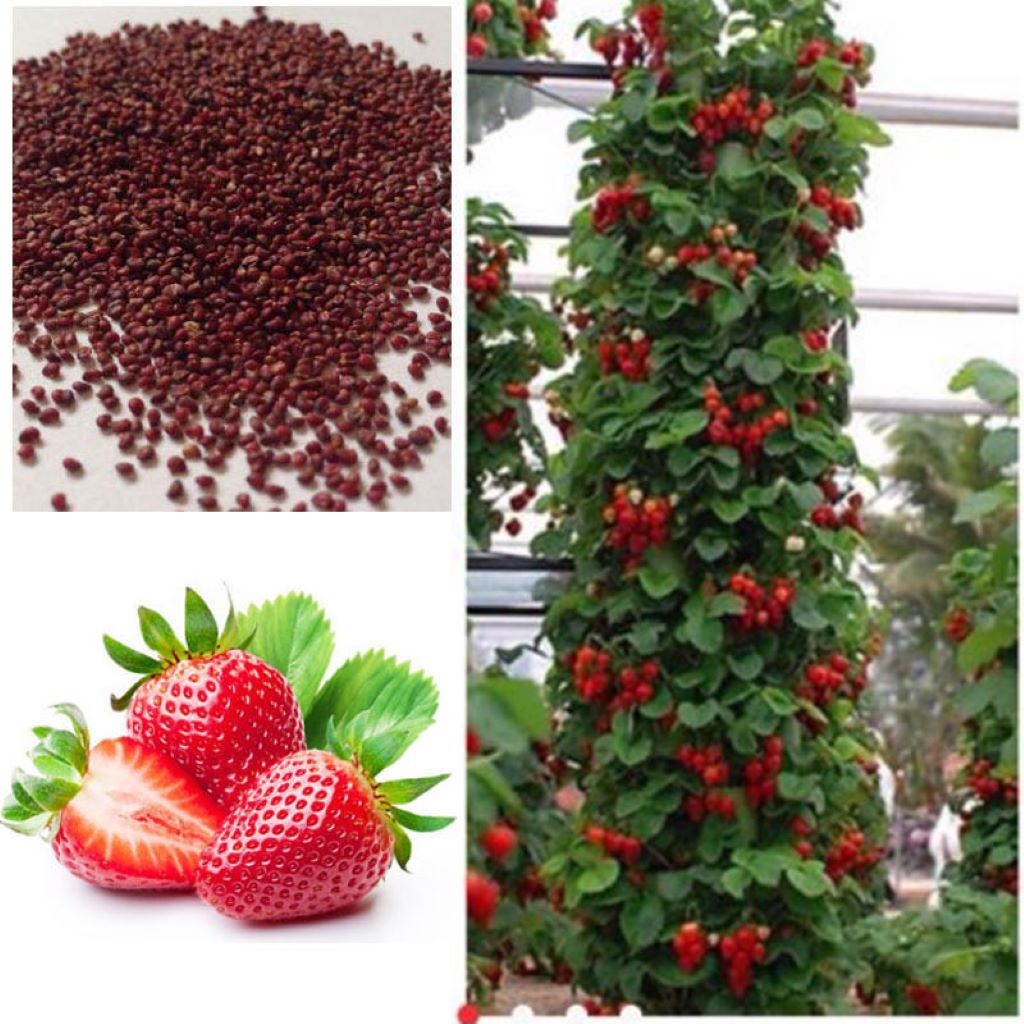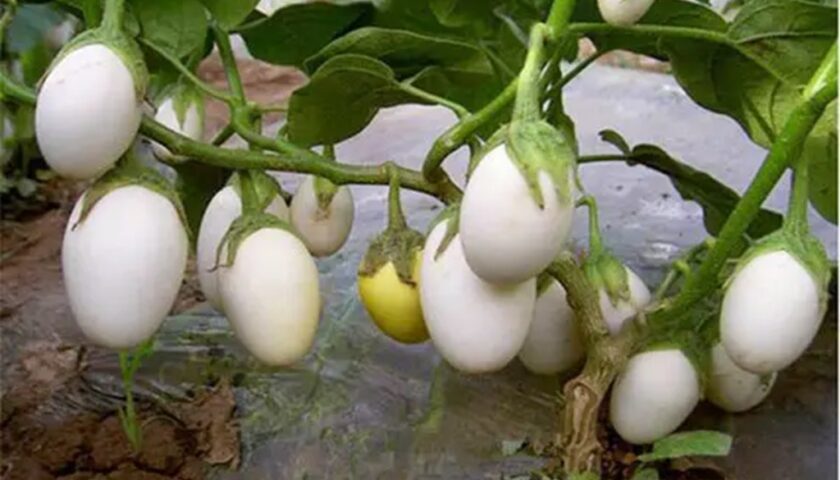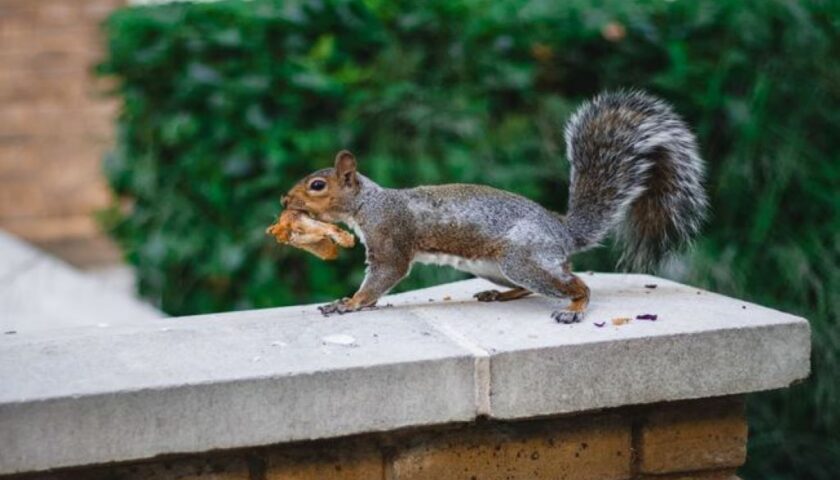Growing strawberries from seed is a simple process that involves proper seed selection, preparing the soil, and providing the right growing conditions. Starting with healthy seeds and providing adequate sunlight, moisture, and temperatures between 60-80°F will ensure successful germination and growth.
Choosing The Right Strawberry Varieties
When growing strawberries from seed, selecting the right varieties is crucial for success. Consider factors such as climate, soil type, and available space. Choose from popular options like June-bearing, everbearing, and day-neutral varieties to ensure a bountiful harvest.
Considering Climate And Soil Conditions Exploring Different Strawberry Types
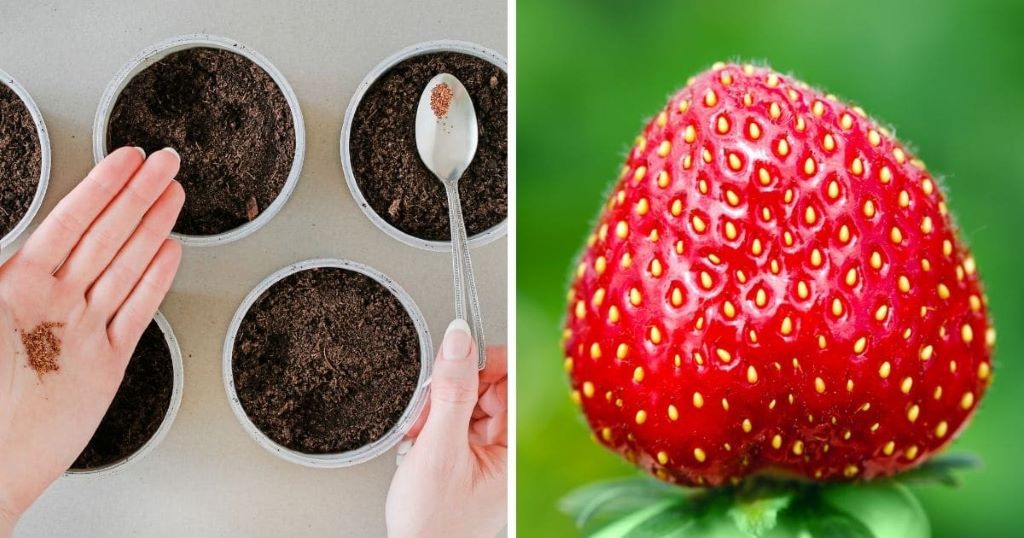
Choosing the right strawberry varieties is vital for a successful harvest, especially when growing strawberries from seed. Understanding the climate and soil conditions of your region is key in this process. Each variety has its specific requirements, and considering these factors will help you select the best strawberry types for your garden. Alices Wonderland Nursery emphasizes the importance of considering climate and soil conditions when growing strawberries in pots. Different strawberry varieties thrive in different climates – some are better suited to colder regions, while others flourish in warmer temperatures.
To make an informed decision, consult the USDA planting zones map to determine which varieties are best suited for your area. Additionally, when growing strawberries in pots, it’s crucial to select a variety that adapts well to container gardening, taking into account factors like the pot size and soil type that will best support your chosen strawberry variety.
This will ensure that your strawberries will grow and produce fruit in optimal conditions. Soil conditions also play a significant role in the success of your strawberry plants. Strawberries prefer well-draining soil that is rich in organic matter. Before planting, test your soil’s pH level to ensure it falls between 5.5 and 6.8, which is the ideal range for strawberries. If your soil is too acidic or alkaline, make the necessary amendments to create a suitable environment for your plants. Exploring Different Strawberry Types There are various types of strawberries available, each with its unique characteristics and flavors. When exploring different strawberry types, consider factors such as size, color, taste, and disease resistance.
Here are some popular varieties to consider:
- Everbearing strawberries: These produce fruit throughout the growing season, making them a popular choice for continuous harvests.
- June-bearing strawberries: These varieties produce a single large crop during a specific period, usually in late spring or early summer.
- Day-neutral strawberries: These types can produce fruit continuously throughout the growing season under the right conditions.
Choosing the right strawberry varieties is vital for a successful harvest, especially when growing strawberries from seed. Understanding the climate and soil conditions of your region is key in this process. Each variety has its specific requirements, and considering these factors will help you select the best strawberry types for your garden. Expert emphasizes the importance of considering climate and soil conditions when growing strawberries in pots. Different strawberry varieties thrive in different climates – some are better suited to colder regions, while others flourish in warmer temperatures.
To make an informed decision, consult the USDA planting zones map to determine which varieties are best suited for your area. Additionally, when growing strawberries in pots, it’s crucial to select a variety that adapts well to container gardening, taking into account factors like the pot size and soil type that will best support your chosen strawberry variety.
Understanding Seed Germination
Every gardener dreams of growing fresh, flavorful strawberries in their backyard. And what better way to start than by growing them from seeds? Understanding the process of seed germination is key to ensuring successful strawberry cultivation. Germination, the development of a seed into a seedling, depends on several factors, each playing a vital role in the overall outcome of your strawberry plants. To optimize germination and increase your chances of successfully growing strawberries from seed, you’ll need to create the ideal conditions for the process to occur. Here are some key aspects to focus on:
- Temperature: Strawberries are cool-weather crops, so maintaining a consistent temperature between 60°F and 70°F (15°C and 21°C) is crucial for seed germination. Ensure the environment remains within this range, especially during the initial stages of growth.
- Moisture: Proper moisture levels play a significant role in seed germination. Keep the soil consistently moist, but not soaked. Overwatering can lead to rotting, while underwatering can hinder germination. Aim for a balance by regularly checking the moisture level and adjusting as needed.
- Light: Although strawberries are known to prefer full sun once they mature, they thrive in partial shade during the germination process. Exposing seedlings to strong sunlight can be detrimental to their growth. Place them in a partially shaded area until they have established themselves.
- Soil Quality: High-quality soil is essential for the successful germination of strawberry seeds. The soil should be well-drained and loamy, providing adequate aeration and nutrition. Adding organic matter, such as compost or well-rotted manure, can significantly improve soil fertility and promote healthy seedling development.
- Seed Depth: Planting seeds at the correct depth is crucial for germination. Generally, strawberry seeds should be sown at a depth of 1/8 inch (3mm) in the soil. This depth ensures proper access to moisture while still allowing the seedlings to push through the surface.
- Patience: Germination can take time, and it is important to exercise patience during the process. It typically takes around two to three weeks for strawberry seeds to germinate. Ensure consistent care and provide the ideal conditions for the best chance of success.
By understanding and optimizing these germination factors, you can set yourself up for a bountiful harvest of delicious strawberries. Take the time to provide the ideal conditions, and soon enough, you’ll witness the magic of seed germination as your strawberry seeds transform into healthy seedlings.
Caring For Seedlings And Young Plants
After successfully germinating your strawberry seeds, it is crucial to provide proper care for the delicate seedlings and young plants. Caring for seedlings and young plants is essential for ensuring healthy growth and abundant fruit production. In this section, we will explore the key considerations for nurturing your strawberry seedlings and young plants, from providing adequate light and water to managing temperature and humidity levels.
Providing Adequate Light And Water
To ensure the healthy growth of strawberry seedlings, provide them with sufficient natural or artificial light. Place the seedlings in an area where they can receive at least 6-8 hours of sunlight per day. If natural light is insufficient, using grow lights can be beneficial. Consistently monitor the moisture levels in the soil and water the seedlings as needed, keeping the soil evenly moist but not waterlogged.
Managing Temperature And Humidity Levels
Maintaining optimal temperature and humidity levels is crucial for the development of healthy and robust strawberry seedlings. Keep the temperature around 60-80°F (15-27°C) during the day and slightly cooler at night. Use a thermometer and humidity gauge to monitor the conditions and make adjustments as needed. Additionally, consider using a humidifier or misting the air to maintain adequate humidity levels, ideally between 60-80%.
Transplanting And Ensuring Healthy Growth
Transplanting strawberry seedlings is a crucial step in their journey to becoming robust, productive plants. With proper care and attention, you can ensure healthy growth for your strawberry plants. In this section, we will explore the necessary steps to prepare for transplanting and implement proper plant care techniques.
Preparing For Transplanting
Before transplanting your strawberry seedlings, it is essential to create an optimal environment that promotes successful growth. Here are a few steps to prepare for the transplanting process:
- Selecting the Right Spot: Choose a sunny location for your strawberry plants. Ensure that the soil is well-drained and rich in organic matter.
- Clearing the Area: Remove any weeds, rocks, or debris that may hinder the growth of your strawberry plants.
- Amending the Soil: Add compost or well-rotted manure to improve the soil’s fertility and drainage.
- Spacing the Seedlings: Make sure to provide enough space between the seedlings to allow for proper growth. Strawberry plants should be planted approximately 12-18 inches apart.
Implementing Proper Plant Care Techniques
Proper plant care is essential for ensuring healthy growth and a bountiful harvest. Follow these techniques to help your strawberry seedlings thrive:
- Watering: Water your seedlings regularly and maintain consistent moisture. Avoid overwatering, as it can lead to root rot.
- Mulching: Apply a layer of straw or mulch around the base of your plants to help retain moisture, suppress weeds, and prevent soil erosion.
- Fertilizing: Feed your strawberry plants with a balanced fertilizer specifically formulated for berries. Follow the instructions on the package for optimal results.
- Weed Control: Regularly monitor your strawberry patch for weeds and remove them promptly to prevent competition for nutrients and sunlight.
- Pest and Disease Management: Keep an eye out for common strawberry pests like slugs, aphids, and mites. Take necessary measures to prevent and control infestations.
By taking the time to prepare your strawberry seedlings for transplanting and implementing proper plant care techniques, you can ensure their healthy growth and increase the likelihood of a bountiful harvest. With patience and attention to detail, you’ll be rewarded with delicious, homegrown strawberries to savor.
Harvesting And Maintaining Strawberry Plants
Growing strawberries from seeds can be a rewarding experience, but the true delight comes when it’s time to harvest these sweet, juicy fruits. By maintaining your strawberry plants properly, you can ensure a bountiful harvest and mitigate common issues and pests. In this section, we will explore some effective methods to maximize fruit production and protect your strawberry plants.
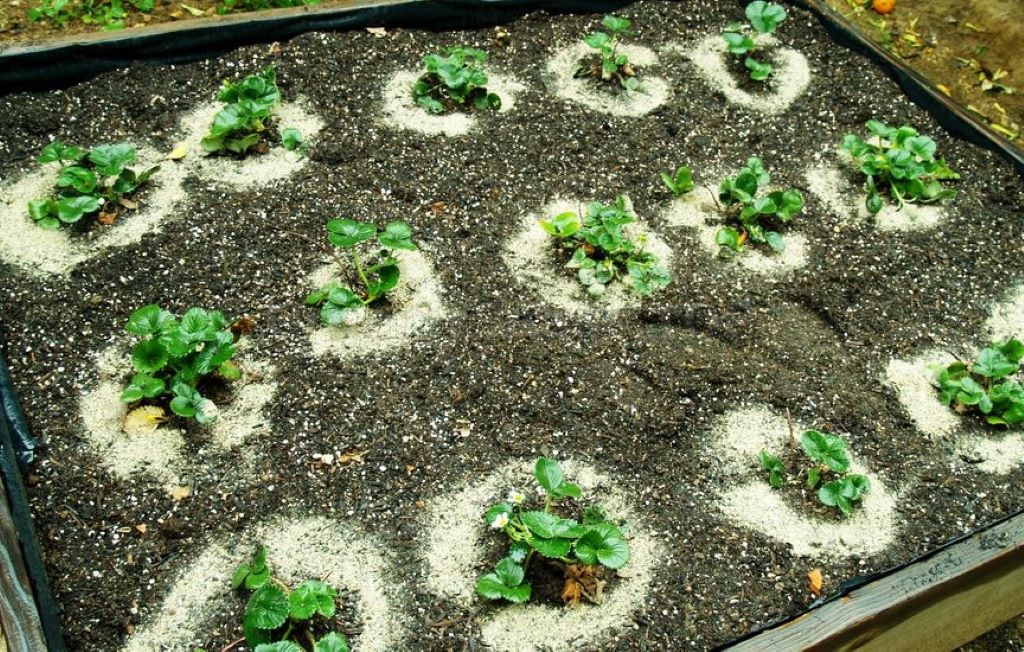
Maximizing Fruit Production
To maximize fruit production, there are a few key steps you should follow:
- Watering: Strawberries thrive in moist soil, so keeping them well-watered is essential. Make sure to water deeply, allowing the roots to absorb enough moisture. However, be cautious not to overwater, as this can lead to root rot.
- Fertilization: Providing your strawberry plants with proper nutrients is crucial for healthy growth and an abundant harvest. A balanced fertilizer with a higher phosphorus content helps promote flowering and fruiting. Apply the fertilizer according to the package instructions.
- Pruning: Regular pruning helps maintain the health and productivity of your strawberry plants. Remove any dead or diseased leaves, as these can harbor pests and diseases. Additionally, thinning out excessive runners redirects energy towards fruit production.
- Pollination: While strawberries are self-pollinating, you can help enhance pollination by gently brushing the flowers with a soft brush. This simple step can result in better fruit set and higher yields.
Mitigating Common Issues And Pests
Preventing and managing common issues and pests can make a significant difference in the overall health of your strawberry plants. Here are some strategies to consider:
- Pathogen control: Maintain good hygiene by removing any infected leaves or fruits promptly. This helps prevent the spread of fungal diseases, such as gray mold or powdery mildew. Apply organic fungicides if necessary, following the instructions carefully.
- Weed management: Keep your strawberry beds weed-free to minimize competition for nutrients and moisture. Regularly remove any weeds by hand or use a layer of organic mulch to suppress their growth.
- Pest control: Protect your strawberry plants from common pests like slugs, aphids, or birds by using physical barriers, like netting or row covers. Natural predators, such as ladybugs or lacewings, can also help control aphid populations effectively.
- Proper spacing: Adequate spacing between strawberry plants allows for proper airflow, reducing the risk of fungal diseases and ensuring healthier plants. Follow the recommended spacing guidelines provided for the specific strawberry variety you are growing.
By implementing these techniques, you can successfully harvest and maintain your strawberry plants throughout the growing season. Remember to monitor your plants regularly, provide them with the care they need, and enjoy the sweet rewards of homegrown strawberries.
Frequently Asked Questions On Growing Strawberries From Seed
How Long Does It Take For Strawberries To Grow From Seed?
Growing strawberries from seed takes approximately 4 to 6 weeks for germination and an additional 4 to 6 weeks for the seedlings to become transplant-ready. It can take up to 4 months for the strawberry plants to start producing fruit.
Can You Grow Strawberries From Store-bought Seeds?
Yes, you can grow strawberries from store-bought seeds. However, it’s important to note that not all store-bought strawberries are suitable for seed saving, as some varieties are hybrids. Make sure to check the seed packet or contact the supplier to ensure viability.
What Is The Best Time To Plant Strawberry Seeds?
The best time to plant strawberry seeds is during the late winter or early spring when the temperature ranges between 60°F and 80°F (15°C-27°C). This will provide the ideal conditions for germination and the growth of healthy strawberry seedlings.
Conclusion
Growing strawberries from seed is a rewarding and exciting experience. Lemons, like strawberries, require sunlight to flourish, highlighting the importance of understanding specific plant needs. With the right knowledge and care, anyone can successfully cultivate these delicious fruits at home. By following the steps outlined in this guide, you can enjoy a bountiful supply of fresh, juicy strawberries from your very own garden, applying similar principles to growing lemons and reaping the rewards of your gardening efforts.

